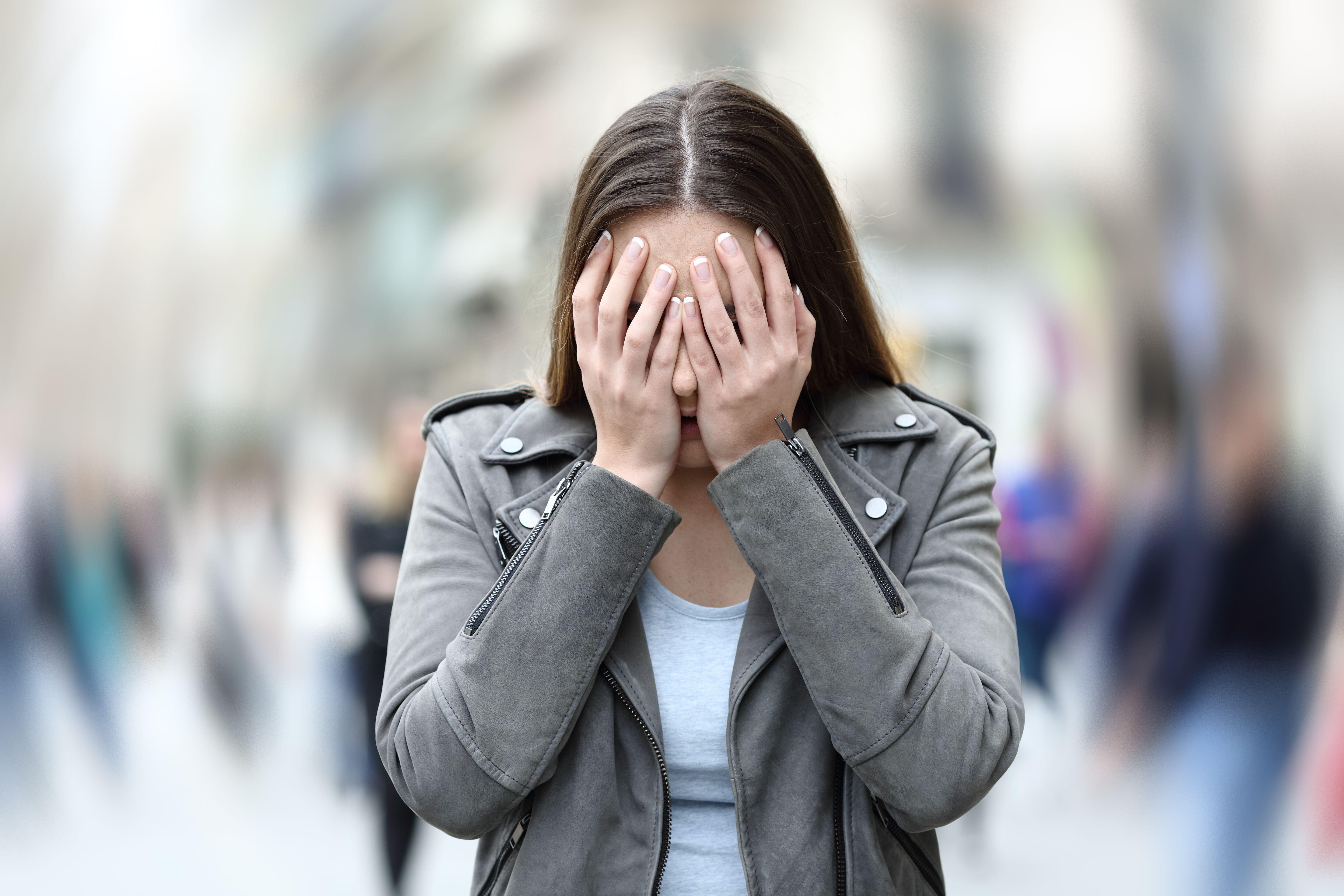Addressing the Rise of Social Anxiety in Young Americans: A Guide to Building Resilience
By Archyde News
“I want advice from people that aren’t afraid to go out by themselves…anxiety says no. Please tell me how you do it if you do.” This tweet, posted earlier this year, resonated deeply, amassing over 200,000 likes and thousands of replies. the responses, ranging from practical tips (“Take Airpods and a book”) to humorous coping mechanisms (“Pretend everyone around you is just a Sim in a video game”), underscore a critical issue facing young Americans: the growing prevalence of social anxiety.
While some might be tempted to dismiss these concerns with a generational label, the surge in social anxiety is a legitimate and pressing issue. The virality of the aforementioned tweet suggests a broader societal trend that demands attention and understanding.
The Scope of the Problem: Social Anxiety in America
Social anxiety, characterized by intense fear of social situations and scrutiny by others, is not merely shyness. it’s a significant mental health concern with far-reaching implications. According to a recent study, social anxiety now affects over half of all American adults (54%), with an even greater impact on young people aged 16 to 24 (72%).This anxiety substantially impacts personal relationships, academic performance, and professional opportunities, leading to decreased quality of life and productivity.
Dr. Elaine Lockhart, chair of the Royal College of Psychiatrists’ Child and Adolescent Faculty, notes, “We’ve seen a dramatic rise in the number of children and young people experiencing anxiety and other mental illnesses in recent years…Mental health services are struggling to manage rising demand, and many children and young people are being placed on unacceptably long waiting lists.”
The consequences are tangible. In the U.S.,a corresponding increase in referrals to mental health services has been observed,echoing trends seen internationally. The American Academy of Pediatrics has declared a national emergency in child and adolescent mental health, emphasizing the urgent need for increased resources and support.
| Demographic | percentage Affected by Social Anxiety |
|---|---|
| General Adult Population | 54% |
| Young Adults (16-24) | 72% |
Unpacking the Roots of Anxiety: Why the Rise?
Several factors contribute to this surge in anxiety. Experts consistently highlight the role of technology, increased academic pressure, economic instability, and the lingering effects of the COVID-19 pandemic. Understanding these factors is crucial for developing effective interventions.
the Digital Landscape: Social Media and Mental Health
Digital devices and social media platforms have become integral to young people’s lives. However, this constant connectivity can have detrimental effects on mental health. A BrainWaves study concluded “high social media use is strongly linked to anxiety and depression”.
The curated nature of online content frequently enough leads to social comparison, fostering feelings of inadequacy and low self-esteem. Cyberbullying, another pervasive issue on these platforms, further exacerbates anxiety and can lead to severe mental health consequences.
The lawsuit in autumn 2024 pointedly accused TikTok specifically of harming young users’ mental health. Though TikTok has taken steps to improve user safety and mental health support, the platform remains a major source of concern, especially regarding content moderation and the potential for addictive use.
Academic Pressure and economic Uncertainty
The pressure to succeed academically is immense, with increasing competition for college admissions and future job prospects. This pressure, coupled with economic uncertainties such as student loan debt and a volatile job market, creates a perfect storm for anxiety.
The Lingering Shadow of COVID-19
The COVID-19 pandemic had a profound impact on mental health, especially among young people. Social isolation, school closures, and disruption to routines led to increased anxiety, depression, and other mental health challenges. While life has largely returned to normal, the long-term effects of the pandemic continue to affect young Americans.
Building Resilience: A Path Forward
Addressing the rise of social anxiety requires a multi-faceted approach focused on building resilience, promoting mental health awareness, and increasing access to affordable and effective treatment.This includes interventions at the individual, family, school, and community levels.
Redefining Resilience: The Journey, Not Just the Destination
Resilience is frequently enough misunderstood as an innate ability to bounce back from adversity.Though, it is indeed better understood as a process of adaptation and growth in the face of challenges. As one expert said, “Resilience building is not…about being able to *do* something. Rather, it’s the *journey* to be able to do something.” They illustrate it with the example of learning to walk: “The resilient process is that bit in between – from where you started trying to walk to now, when you walk and don’t even think about it. You are resilient in the fact that you didn’t give up, you kept trying, you kept making small changes to improve until you could do it.”
Embracing failure as a learning opportunity is crucial for fostering resilience. “Distress shouldn’t automatically be interpreted as a sign of mental ill-health or a clinical problem,” explains Professor Danese. “It’s perfectly natural – and indeed necessary – for young people to encounter challenges and experience distress as part of their emotional development. it’s through navigating these experiences that adolescents learn essential coping strategies.”
Practical Strategies for Building Resilience
Parents play a crucial role in fostering resilience in their children. Rather than shielding children from all challenges, parents should provide support and guidance as they navigate arduous situations. Creating opportunities for age-appropriate independence and problem-solving is essential.
It is indeed critically important for parents to stop trying to fix everything for their kids and start pushing them into “those more difficult conversations or situations so that they can understand they *can* do it”.
Schools can promote resilience by incorporating social and emotional learning (SEL) programs into the curriculum. These programs teach students how to manage their emotions, build positive relationships, and make responsible decisions.
Individuals can also take proactive steps to build their resilience. These include:
- Practicing mindfulness and relaxation techniques, such as deep breathing exercises and meditation.
- Developing healthy coping mechanisms for stress, such as exercise, hobbies, and spending time in nature.
- Building a strong support network of family, friends, and mentors.
- Setting realistic goals and celebrating small successes.
- seeking professional help when needed.
Seeking Help: Effective Treatment Options
For those struggling with social anxiety, a range of effective treatment options are available. Cognitive Behavioral Therapy (CBT) is a widely used and evidence-based therapy that helps individuals identify and change negative thought patterns and behaviors associated with anxiety.
Cerys, who experienced a nervous breakdown, shared her experience: “This has been the biggest step forward I have taken in getting control of my anxiety.”
Medication, such as antidepressants and anti-anxiety drugs, may also be helpful in managing symptoms of social anxiety. However, medication should be used in conjunction with therapy and under the guidance of a qualified healthcare professional.
| Treatment Type | Description | Effectiveness |
|---|---|---|
| Cognitive Behavioral Therapy (CBT) | Therapy that helps identify and change negative thought patterns and behaviors. | Highly effective, evidence-based treatment. |
| Medication | Antidepressants and anti-anxiety drugs to manage symptoms. | Can be effective, especially when combined with therapy. |
| Mindfulness-Based Interventions | Techniques like meditation and deep breathing to reduce stress and increase self-awareness. | Helpful for managing anxiety symptoms. |
embracing Discomfort: A Call to Action
the rise of social anxiety among young Americans is a complex and multifaceted issue that requires a comprehensive and collaborative approach. By understanding the underlying causes, promoting resilience, and increasing access to effective treatment, we can empower young people to overcome their fears and live fulfilling lives. Instead of labeling them as a “snowflake generation,” perhaps the best approach is to encourage them to try new things, embrace discomfort, and learn from their mistakes.
As the original article concluded: “Telling adolescents to “get a grip” is hardly helpful – but perhaps we could start by encouraging them to try something new. embarrass themselves. Do karaoke.Kiss someone. And, most importantly, *make mistakes* – because it’s not the falling down that matters in the long term, but the getting up and trying again.”







